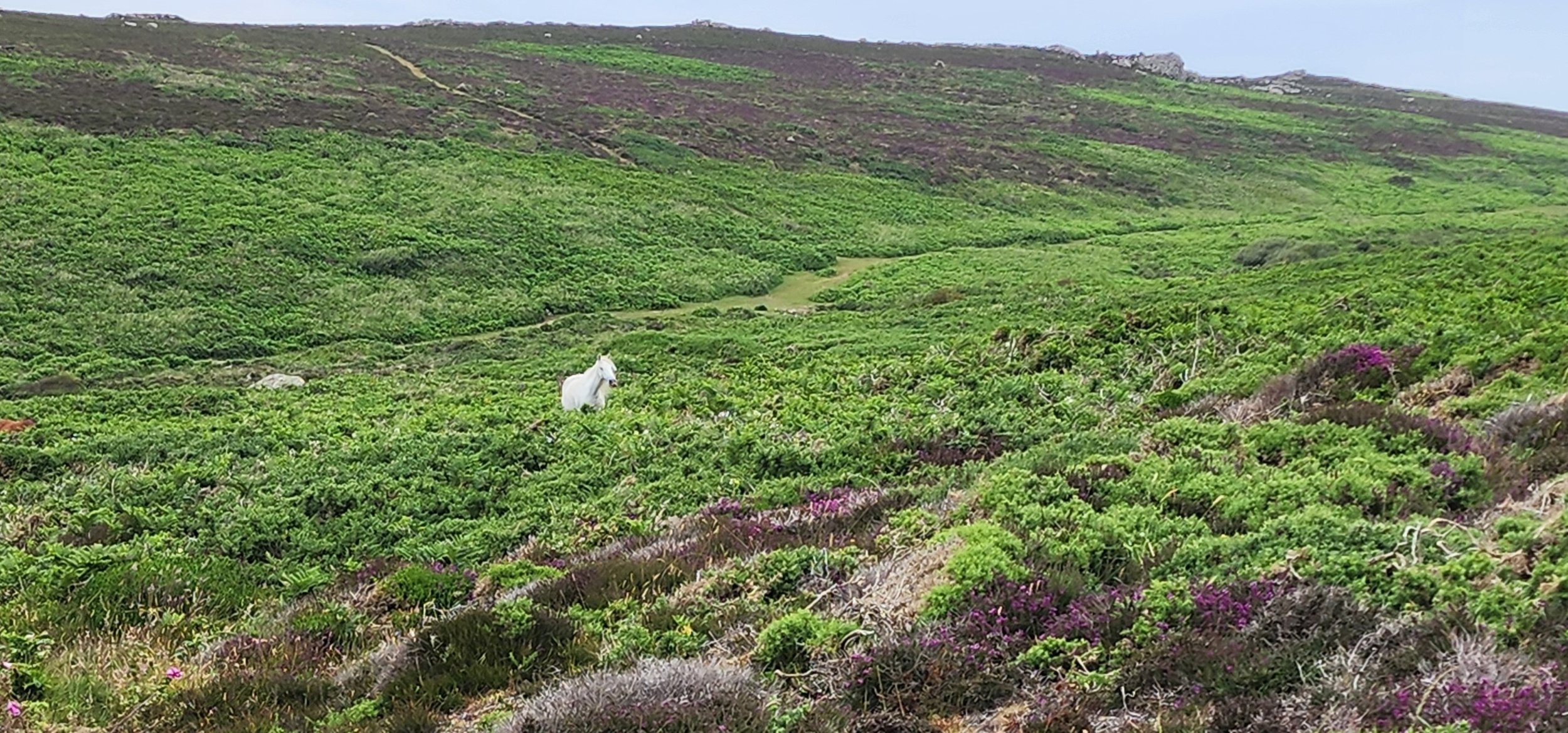The Gower, St David’s and Skomer Island
30 June to 03 July 2024
Julie and Anthony with the Wyrms head in the distance
On Sunday we said goodbye to our brilliant hosts, Sarah, Steve, Lily, Mali and of course Nola (Dan had gone back to Uni in Bath) and headed west toward St David. On the way, we stopped in the Gower to see the marvel that is the Wyrms Head in Rhossili Bay.
Share the Road
Wyrms Head
The Wyrms head looks exactly like a dragon resting in the bay. At low tide you can walk to the end, (un)fortunately we were there at high tide so we were not tempted.
Julie made friends
You may notice, Julie has graduated from sandals to crocks, her foot is getting better.
Can you imagine living in that white house? So remote.
After a picnic lunch of sandwiches at the Gower, we drove further west to our Air B & B in Trefin (pronounced Trevin, in Welsh f = v, ff = f).
View from our Air BnB.
On Monday, we visited the picturesque town of St David, St David’s Cathedral and the neighboring Bishop’s Palace ruins.
The St David’s Cathedral dates back to 1131, built by Bishop Bernard (appointed by King Henry I of England) at the site of a monastic community founded by St David in the 7th Century.
Again the interior architecture is spectacular, with Norman columns supporting ceilings and stained glass windows that draw your eye toward heaven.
There were also lots of geometric patterns, circles in circles and arches in arches
Bishop Henry Gower (I think) in repose
Edmund Tudor, Earl of Richmond, father of King Henry VII
Anthony saw the above flowers in St David’s, whilst scarpering up the hill to pay for parking.
Right next to the Cathedral sits the ruins of St David’s Bishops Palace. It is an impressive structure, started in the 13th century at the request of Edward I, it was finished in the 1330s by Bishop Henry de Gower.
Treacherous stairs
Bee hives
Views of the palace from outside.
St Bishop’s Cathedral from up the hill.
St David’s Head
Julie found another terrific ocean hike at St David’s Head. Also on our walk was Coetan Arthur (Arthur’s Quiot) a Neolithic burial chamber from around 3000 BC.
Julie was able to put on her sneakers for the first time since she banged up her foot in Bath. At this point you may be impressed with how much walking she has done to this point (Anthony was).
You can’t tell from the photo, but the hill is very, very steep to Julie’s right. One slip and you would be rolling down the hill, over the cliff and into the bay (if you were lucky, chances are you’d hit rocks). See below for Cliffs.
Coetan Arthur
Shadowfax?
Ponies on the edge
Julie on the way back
Puffin in flight
Tuesday Julie and Anthony drove to Skomer Island for the Puffin Cruise.
From the car on the way to Skomer Island.
Lonely Puffin on the way to Skomer Island
As the boat drew closer to Skomer Island, we saw more and more puffins, until they were everywhere! There are 41,000 puffins on Skomer Island (our boat captain has counted all of them).
Here we learnt our favorite word on our trip so far. Pufflings (pronounced Poof-lings, with a hard accent on the Poof) which are baby puffins. Using our captain’s Welsh accent, pufflings incredibly fun to say. Consider puffling as a name for your next child (or dog).
There were other birds there too, these are Guillemots.
Anthony temporarily lost his ball cap, so he had to purchase a stylish Skomer Island Cap complete with knit puffins.
We stopped in Dale (The Griffin, excellent) for lunch. There was a replica Viking ship in harbor. We thought it a bit small.
At lunch, only a thin pane of glass separated us from the road.
It was a beautiful day, so we stopped at Carreg Samson, a 3000 BC Neolithic Burial chamber located in a farmer’s field near Trefin.
Our friend Russel (Rupert was not that interested) was there to see us off on Wednesday morning. We took one last view and headed to Anglesea.
Our Maps: Drive to Trefin, St Davids, Skomer Island

































































































